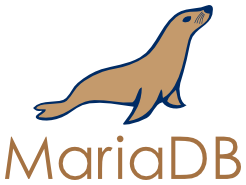[MySQL compatible/derivative] About the features of MariaDB [Seal]

table of contents
This is Ohara from the technical sales department.
I will describe the characteristics of
MariaDB , a MySQL-compatible DB derived from MySQL By the way, "My" in "MySQL" is the name of the developer's eldest daughter, and "Maria" in "MariaDB" is the name of her second daughter.
*This article is current as of September 2020.
Main specifications and functions unique to MariaDB (MariaDB 10.3 and later)
MariaDB originally appeared as a compatible/derivative of MySQL, but recently, MariaDB has been updated more quickly, and it has many specifications and functions that are unique to MariaDB and are not found in the original MySQL.
Here we have summarized MariaDB's unique specifications and functions.
* Since updates are repeated between MySQL and MariaDB, there is a good chance that MySQL will reimport MariaDB's specifications and functions in the future.
| item | overview |
| Forced termination of ID | Forcibly terminate the query with the specified ID |
| Regular expression engine changes | Regular expression enhancements with regular expression engine changes |
| Obtaining deletion results | When using the DELETE ... RETURNING syntax, if the target of deletion is one table, the deletion result is returned. |
| Initial value settings for BLOB columns and text columns | Initial values can be set for BLOB columns (huge binary data type) and TEXT columns |
| Executing dynamic SQL | Forcibly generate SQL from a string like OracleDatabase |
| system versioning table | Function to record data update date and time and save data history |
| Oracle compatibility mode | OracleDatabase SQL mode |
| table value constructor | Ability to generate data combinations on the fly |
| Application function | Ability to define aggregate functions as stored functions |
| sequence table | Function to generate sequential numbers |
| FOR loop | Ability to loop using FOR syntax |
| Application period table | You can set the time arbitrarily |
Recommended features of MariaDB

Earlier I described the unique specifications and functions of MariaDB that MySQL does not have, and I would like to introduce three recommended points.
● System versioning table:
・When changing (updating) DB data, overwriting is the basic method, but if you enable this system versioning function, the history of all changes will be saved. By specifying/specifying the data that remains in the history, you will be able to retrieve the relevant data, making it possible to analyze data at any point in time, audit changes, and compare data at different points in time.
● Oracle compatible mode:
- A feature that enables compatibility with the commercial database Oracle Database. It makes it easy to migrate from Oracle Database, as it can use Oracle Database's own syntax and execute its own stored procedure language (PL/SQL).
● Sequence table:
・Sequential numbers can be handled in a separate table, like the sequence function in PostgresSQL that manages sequential numbers. This makes it easier to check the current sequence number value and reassign sequence numbers.
MariaDB precautions (incompatibility with MySQL)
When comparing MariaDB and MySQL, there are many similar specifications/functions, but they are not compatible in everything, so you need to be careful about the following items.
● Differences in functions (different JSON and GTID implementations, etc.)
● Differences in system variables (different default values)
● Character sets/collations are not supported
summary
Above, we have introduced the overview and features of MariaDB.
If you normally operate MySQL, you should be able to easily get used to MariaDB, although there are some differences in manners.

 0
0







